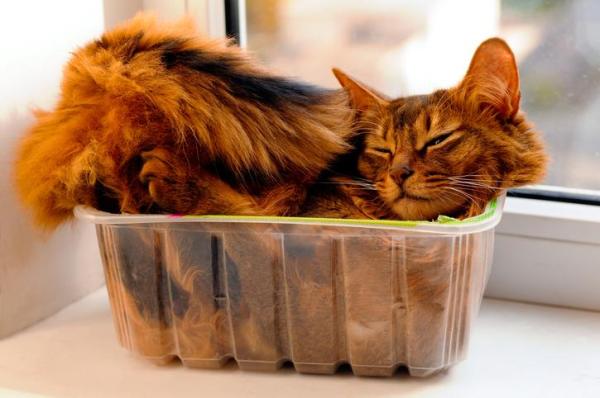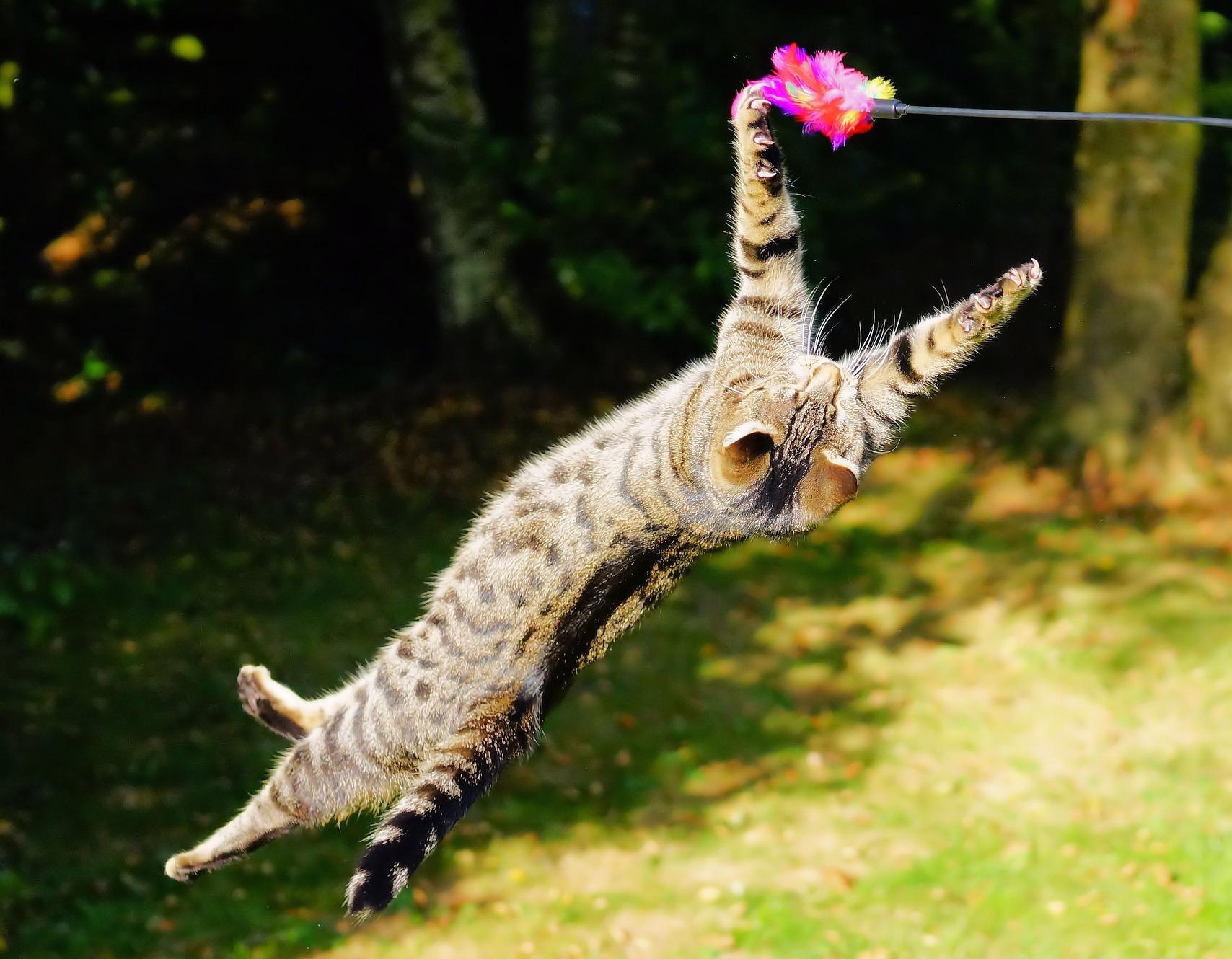Cat Traits and Abilities You May Not Know



See files for Cats
People who share their lives with cats know they will constantly surprise us with their antics. Even if we think we know felines well, they can often do something which seems completely out of the ordinary. When cats are inclined to do so, they can really perform some cool feats. Their abilities to perform them come from their physical traits and characteristics.
In this AnimalWised video, we provide 7 cool cat traits and abilities you might not know. By seeing what they are capable of, you will better be able to know your own cat and strengthen your bond together through understanding.
Cool traits and abilities of cats
There are many things to love about cats. How they show affection, play with almost anything in their environment and snuggle into a ball of cuteness are only some of their traits which lead them to be such a popular companion animal. However, they have a much greater capacity and have some cool abilities and traits you may not have ben aware of. They include:
- Flexibility and elasticity
- Excellent balance
- Silent and stealthy movement
- Amazing night vision
- Multipurpose tongue
- Acute imagination
- Incredible hearing and smell
In the sections below, we will detail how these amazing traits work and how this affects the cat's behavior. If you want to know more about some of the more general aspects of cats, take a look at our guide to cat behavior.
1. Flexibility and elasticity
You will have witnessed just how flexible cats are when you see them fitting into tight spaces. Although the positions it takes would seem to be very uncomfortable, cats can crawl through small spaces like liquid. This is due to the great flexibility and elasticity afforded them by their bone structure.
A healthy adult cat should have about 244 bones in their skeleton. This is about 40 more than we humans. The disks between their vertebrae are also thicker than ours. In addition to this is a strong, well-developed musculature. Their physical morphology allows them to be extremely agile and perform aerobatic feats. Not only can they fit into small spaces, but they can launch themselves distances that exceed 5 or 6 times their body length.

2. Excellent balance
You may have been looking out your window to see a cat walk along a very thin or unstable surface with extreme grace. They do not become unbalanced or lose the elegance of their gait. This is possible thanks to the fact they have small channels in their inner ear covered with tiny hairs and filled with fluid. These structures act in sync with their vision to give them excellent balance. Since their musculature and agility makes them agile, they can amaze us with their incredible tightrope walking ability.
3. Silent and stealthy movement
As if their flexibility, balance and agility were not enough, another cool trait of cats is their ability to move so stealthily. They are often so undetectable it is as if we share our home with a little furry ninja. You may have thought this when you are having a quiet rest on the sofa and your cat suddenly appears right next to you without warning.
One of the reasons cats can move so quietly, even along hard surfaces, is because their paws have soft skin on their pads and their claws are retractable. The reason they have these cool physical traits is because their evolutionary development has allowed them to be better hunters. By moving stealthily, cats can both chase and attack their prey, as well as deftly avoid predators. We explain more in our article on cat hunting behavior.
4. Amazing night vision
As with wildcats, domestic cats have a very privileged night vision. This cool trait is the result of an evolutionary process which allows them to better hunt at night. Although we may not think it, cats are actually nocturnal animals. In the wild, they will keep a low profile during the day and be much more active at night. They have developed a greater ability to do this via the structure of their eyes.
The cells in a cat's eye cannot transmit detailed information to the brain when subjected to intense light. However, at nighttime, their vision is much more acute. Dim light allows them better to perceive shapes and distances. They also have a membrane at the back of the eye called the tapetum lucidum. This membrane is reflective and allows the cat to reflect dim light so they have much better night vision.
A common myth about cats is that they can see in complete darkness, but this is not accurate. However, they can amplify very low light which provides them with better night vision. To understand more about feline vision, take a look at the video below on why cat's eyes shine in photos:

5. Multipurpose tongue
Perhaps you have noticed that a cat's tongue has a much rougher texture than our own, even from other mammals. This is because the structure of a cat's tongue is different. As with us, a cat's tongue has mucus membranes known as taste buds. Different to us is the face these papillae are conical and contain keratin which makes them very firm.
When a cat licks us, it can feel a little like the sensation of sandpaper thanks to these hard spines on their tongue. The spines are useful for various reasons, but particularly for their grooming routine. As with the bristles on a hair brush, the cat's tongue allows them to remove dirt and debris from their fur. They also allow this to happen without removing the natural oils from their skin which act as a layer of protection.
Cats are very clean animals and they devote a lot of time to grooming. Doing so also helps them to avoid parasites and insect bites which can be vectors of disease. While it is not true that a cat's saliva is a miracle product which can cure disease, it does act in a small antibacterial way. This does not mean we can avoid instigating vaccination and deworming schedules. We also need to brush them periodically to remove dead hair and avoid hairballs.
Although not as varied as humans, a cat's tongue also allows them to taste. Catas do not perceive sweetness since they do not produce the proteins necessary to do so. While we might think this is disappointing from our perspective, it is actually a very cool and help trait. Not only does it helps cats to avoid food which is harmful to them, but it helps them to avoid poisonous substances too.
6. Acute imagination
When we leave a cardboard box lying around, it can be amazing just how quickly a cat will take to it. While we might see a simple piece of recycling, cats can see a hideout, a bed, a maze, an obstacle course and much more. Cats are able to have hours of fun with a simple box due to their active and acute imagination. It is the same imagination which helps them to play when they are kittens and hunt when they are older.
Human beings also have this amazing ability during childhood, but many tend to lose it as they grow. If you are with a cat and have a cardboard box handy, why not take the opportunity to recover the child in you and play together. Playing with your cat in this way exercises their imagination and allows them cognitive stimulation, encourages your bond and is a way to tire them out when they have too much energy.

7. Incredible hearing and smell
Cats have a much higher number of olfactory cells than humans. Additionally, they use their whiskers, eyelashes, and the hairs under their chin as motion sensors. Thanks to these cells, they have a very sensitive sense of smell. This allows them to quickly detect prey, predators, females in heat, poisonous or decomposing food or territories of other cats, among others.
Feline hearing is also acute. They can hear a wide spectrum of frequencies, even very high-pitched sounds. This sensitivity to high frequencies allows them to hear ultrasound up to 50,000 Hz. When we compare this with humans, we will see that they only have a measly 20,000 Hz capacity. Although cats generally have this ability, we always need to consider whether it is possible they are deaf.
As with other cool traits and abilities of cats, this heightened hearing allows them to find prey and avoid being prey. It is all due to channels in their ears which have fluid and delicate hairs, both helping to amplify even the smallest sounds. Cats can also move their ear pinnae in different directions to have a better radius of hearing.
Please share any of your favorite cat traits and abilities in the comments. If you want to know about another fascinating aspect of cat behavior, check out the video below on cats making human sounds:

If you want to read similar articles to Cat Traits and Abilities You May Not Know, we recommend you visit our Facts about the animal kingdom category.







